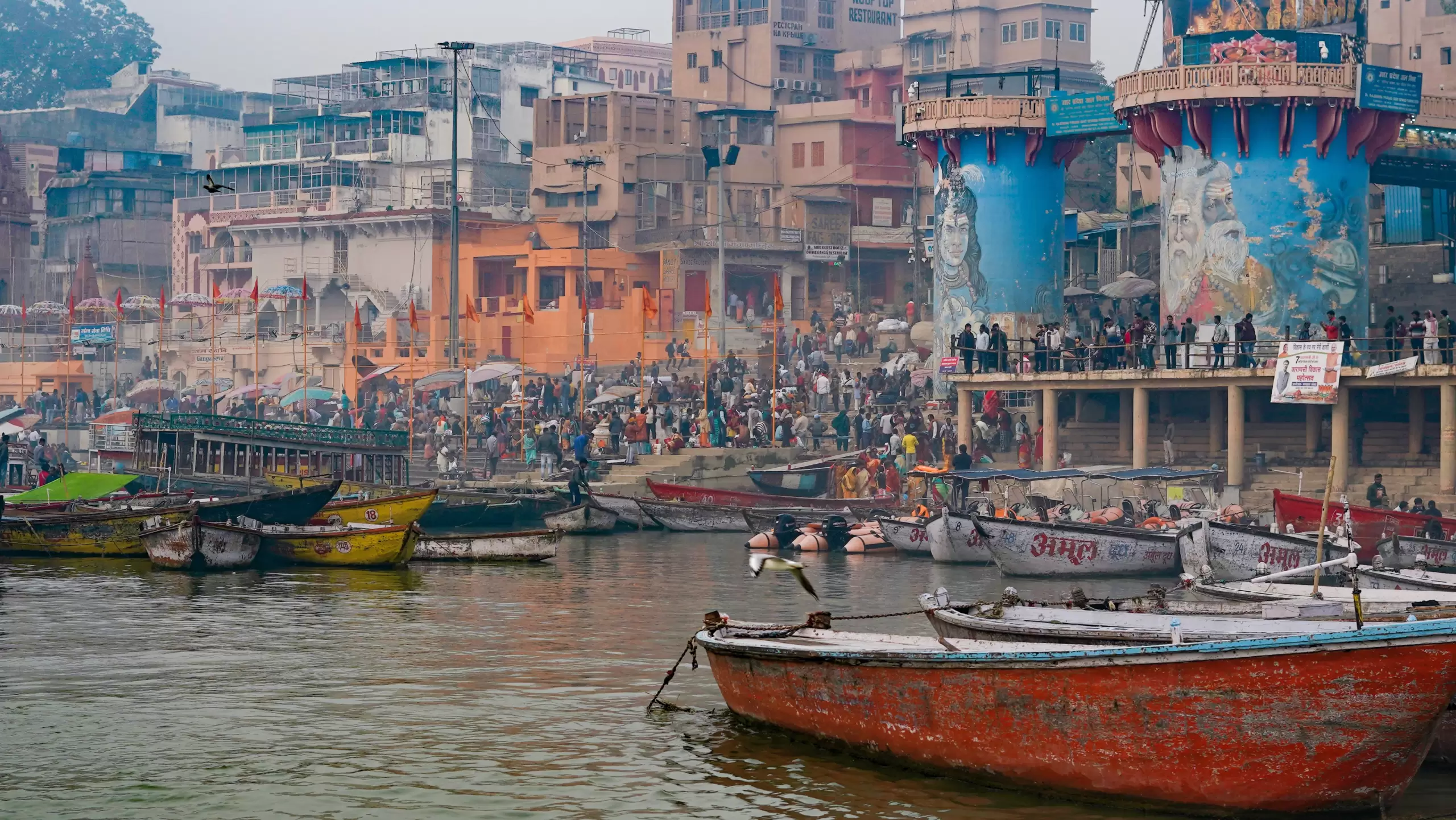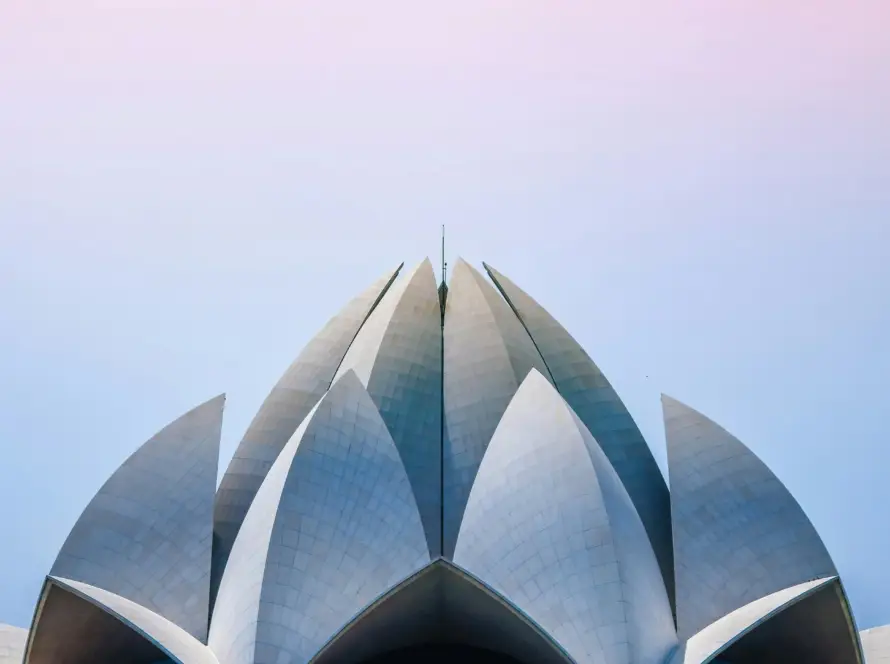Generated by Contentify AI
- Introduction
- India’s Ancient Civilizations
- The Influence of Religion
- Traditional Arts and Crafts
- Festivals and Celebrations
- Regional Cuisine
- Architecture and Monuments
- Exploring Indian Dance and Music
- Modern Indian Cinema
- Conclusion

Introduction
India’s rich cultural heritage is a treasure trove waiting to be explored. From ancient civilizations to vibrant festivals, traditional arts and crafts to diverse regional cuisines, India offers a fascinating glimpse into its diverse cultural tapestry. With a history spanning thousands of years, India has been influenced by various religions, resulting in a unique blend of customs and traditions. The country’s architectural marvels and monuments stand as testaments to its glorious past. Indian dance and music forms captivate audiences with their grace and beauty. And in recent years, Indian cinema has made its mark on the global stage. Get ready to embark on a journey through India’s cultural heritage, as we delve into its fascinating history, traditions, and artistic expressions.
India’s Ancient Civilizations
India’s rich cultural heritage is deeply rooted in its ancient civilizations, which date back thousands of years. The Indus Valley Civilization, one of the world’s oldest urban societies, flourished in the northwestern region of India around 2500 BCE. Known for its advanced urban planning, drainage systems, and intricate pottery, this civilization provides a fascinating glimpse into India’s early history.
Another significant ancient civilization in India is the Vedic civilization. With its origins in the Indus Valley, the Vedic period saw the emergence of Hinduism and the composition of the sacred texts known as the Vedas. This period laid the foundation for many of India’s religious and philosophical traditions that continue to shape the country’s cultural fabric today.
Further exploration of India’s rich cultural heritage reveals the influence of religion on various aspects of Indian life. Hinduism, Buddhism, Jainism, Islam, and Sikhism have all left indelible marks on Indian art, architecture, literature, and festivals. The intricate carvings and sculptures adorning ancient temples, such as the magnificent temples of Khajuraho and the grandeur of the Ajanta and Ellora caves, showcase the fusion of spirituality and artistic expression.
India’s cultural richness is also reflected in its traditional arts and crafts. From the intricate embroidery of Gujarat’s Kutch region to the exquisite pottery of Rajasthan, each state in India boasts its unique artistic traditions. Handloom weaving, block printing, metalwork, and intricate jewelry-making are just a few examples of the diverse craftsmanship that has been passed down through generations.
Festivals and celebrations play a vital role in India’s cultural heritage. Diwali, Holi, Navaratri, and Eid are just a few of the vibrant celebrations that bring communities together to celebrate their religious and cultural traditions. These festivals feature colorful rituals, music, dance, and delicious traditional cuisine, offering a sensory feast and a window into the heart of Indian culture.
India’s architectural marvels and monuments are a testament to its glorious past. From the iconic Taj Mahal, a symbol of eternal love, to the ancient forts and palaces of Rajasthan, each structure tells a story of India’s rich history and architectural prowess. Whether exploring the grandeur of Mughal architecture or the intricacies of South Indian temples, visitors can witness the diverse styles and influences that have shaped India’s architectural landscape.
Exploring India’s rich cultural heritage is incomplete without delving into its dance and music forms. From the graceful movements of
The Influence of Religion
India’s rich cultural heritage is deeply influenced by religion, making it a fascinating aspect to explore. Religion has played a significant role in shaping India’s customs, traditions, and way of life. Hinduism, Buddhism, Jainism, Islam, and Sikhism have all left their mark on the country’s artistic, architectural, and social fabric.
Religious practices and beliefs are intertwined with everyday life in India. Temples, mosques, churches, and gurudwaras can be found in every nook and corner of the country, serving as spiritual and cultural centers. These places of worship are not just architectural marvels but also repositories of art, showcasing intricate carvings, vibrant paintings, and breathtaking sculptures.
Religious festivals and celebrations are an integral part of India’s cultural tapestry. From the colorful festival of Holi to the grandeur of Diwali, these celebrations bring people together in a spirit of joy, unity, and devotion. Through these festivals, one can witness the rich traditions, music, dance, and culinary delights that have been passed down through generations.
The influence of religion is also evident in traditional arts and crafts. Intricate patterns, motifs, and symbols are often inspired by religious stories and beliefs. Handicrafts such as paintings, textiles, pottery, and jewelry reflect the diverse artistic expressions of different religious communities across India.
Indian classical dance and music forms are deeply rooted in religious traditions. Bharatanatyam, Kathak, Odissi, and other dance forms have their origins in ancient temple rituals and narratives from Hindu mythology. Similarly, classical music, whether Hindustani or Carnatic, is intertwined with devotional poetry and religious themes.
The architectural marvels and monuments of India bear witness to the influence of religion. From the majestic temples of Varanasi to the serene mosques of Delhi, each structure tells a story of faith, devotion, and artistic brilliance. The intricate carvings, domes, minarets, and spires showcase the architectural diversity born out of religious inspiration.
Exploring India’s rich cultural heritage is incomplete without delving into the influence of religion. It is through religion that one can truly understand and appreciate the customs, traditions, art, music, and architecture that make India a unique and enchanting destination for cultural exploration.
Traditional Arts and Crafts
India’s rich cultural heritage is a tapestry woven with the threads of ancient civilizations, religious influences, and artistic expressions. One of the fascinating aspects of exploring India’s cultural heritage is delving into its traditional arts and crafts. From intricate embroidery to exquisite pottery, the country’s diverse craftsmanship reflects centuries-old traditions passed down through generations.
Indian arts and crafts showcase a remarkable level of skill and attention to detail. Each region in India boasts its unique artistic traditions, with techniques and motifs varying from state to state. The colorful embroidery of Gujarat’s Kutch region, the intricate metalwork of Rajasthan, and the delicate Pashmina shawls of Kashmir are just a few examples of the craftsmanship that has flourished in India for centuries.
The artistic expressions are deeply rooted in the cultural beliefs and values of the Indian people. Many traditional arts and crafts are inspired by religious stories, mythology, and spiritual beliefs. For example, the art of Madhubani painting originated in Bihar and depicts scenes from Hindu epics such as the Ramayana and Mahabharata. Similarly, the intricate stone carvings seen in temples across India often depict gods, goddesses, and mythological figures.
Exploring India’s traditional arts and crafts is not just a visual treat but also an opportunity to connect with the country’s cultural history and heritage. The artisans who practice these crafts often come from families that have been involved in the trade for generations. Their skills have been honed and perfected over time, preserving the rich traditions and techniques that have been passed down through generations.
In recent years, there has been a growing appreciation for Indian arts and crafts both within the country and internationally. Artisans and craftspeople are receiving recognition for their talent and craftsmanship, leading to the revival and preservation of many endangered art forms. Organizations and initiatives have been established to support and promote these artisans, ensuring the continuation of these age-old traditions.
Exploring India’s rich cultural heritage through its traditional arts and crafts offers a glimpse into the soul of the nation. It is a celebration of creativity, skill, and the rich cultural diversity that is India. Whether it is admiring the intricate details of a hand-woven saree or marveling at the craftsmanship of a traditional jewelry piece, the world of Indian arts and crafts invites us to appreciate the beauty and heritage that have stood the test of time.
Festivals and Celebrations
India’s rich cultural heritage is a tapestry woven with the threads of ancient civilizations, religious influences, and artistic expressions. One of the fascinating aspects of exploring this cultural treasure is diving into the world of traditional arts and crafts. India’s diverse craftsmanship reflects centuries-old traditions passed down through generations.
From the intricate embroidery of Gujarat’s Kutch region to the exquisite pottery of Rajasthan, each state in India boasts its unique artistic traditions. Handloom weaving, block printing, metalwork, and intricate jewelry-making are just a few examples of the diverse craftsmanship that has been honed and perfected over time.
What makes India’s traditional arts and crafts truly captivating is their deep-rooted connection to the country’s cultural beliefs and values. Many traditional art forms draw inspiration from religious stories, mythology, and spiritual beliefs. Each piece tells a story, whether it’s the scenes from Hindu epics depicted in Madhubani paintings or the intricate stone carvings found in temples across the country.
Exploring India’s traditional arts and crafts is not just a visual treat but an opportunity to connect with the country’s cultural history and heritage. The artisans who practice these crafts often come from families that have been involved in the trade for generations. Their skills have been honed and perfected over time, preserving the rich traditions and techniques that have been passed down through generations.
In recent years, there has been a growing appreciation for Indian arts and crafts, both within the country and internationally. Artisans and craftspeople are receiving recognition for their talent and craftsmanship, leading to the revival and preservation of many endangered art forms. Organizations and initiatives have been established to support and promote these artisans, ensuring the continuation of these age-old traditions.
Exploring India’s rich cultural heritage through its traditional arts and crafts offers a glimpse into the soul of the nation. It is a celebration of creativity, skill, and the rich cultural diversity that is India. Whether it is admiring the intricate details of a hand-woven saree or marveling at the craftsmanship of a traditional jewelry piece, the world of Indian arts and crafts invites us to appreciate the beauty and heritage that have stood the test of time.
Regional Cuisine
India’s rich cultural heritage is a tapestry woven with the threads of ancient civilizations, religious influences, and artistic expressions. As we explore this captivating heritage, one aspect that stands out is the country’s diverse regional cuisine.
India’s culinary traditions are as diverse and vibrant as its cultural landscape. Each region boasts its unique flavors, ingredients, and cooking techniques, passed down through generations. From the spicy curries of the south to the aromatic biryanis of the north, exploring India’s regional cuisine is a mouthwatering journey.
In the north, the rich Mughlai cuisine showcases the influence of the Mughal Empire, with its delectable dishes like biryanis, kebabs, and creamy curries. Moving to the west, the state of Gujarat offers a variety of vegetarian delicacies, known for their sweet and tangy flavors. The coastal regions of Kerala and Goa delight with their abundance of seafood and coconut-based dishes.
In the east, Bengal’s cuisine is renowned for its fish preparations and sweets like rasgulla and sandesh. The northeastern states offer a unique culinary experience with dishes like momos, thukpa, and bamboo shoot delicacies. And in the south, the aromatic spices of Tamil Nadu, Karnataka, and Andhra Pradesh create a distinct flavor profile, with dishes like dosas, idlis, and spicy curries.
Exploring India’s regional cuisine not only satisfies the taste buds but also offers insights into the country’s diverse cultural heritage. The choice of ingredients, cooking methods, and flavors are often influenced by the local agriculture, geography, and cultural practices.
Food is an integral part of Indian culture and is often shared and celebrated during festivals, weddings, and other special occasions. Traditional cooking techniques, such as tandoori baking, clay pot cooking, and spice blending, have been preserved over centuries, adding depth and uniqueness to each regional cuisine.
In recent years, Indian cuisine has gained global recognition and popularity. Indian restaurants can be found in almost every corner of the world, serving dishes that bear the imprint of India’s rich cultural heritage. From street food stalls to fine dining establishments, exploring Indian cuisine has become a global culinary adventure.
Exploring India’s rich cultural heritage through its regional cuisine is an invitation to indulge in a symphony of flavors, spices, and culinary traditions. It is a journey that not only satisfies the palate but also deepens our understanding and appreciation of the rich tapestry of India’s diverse cultural heritage
Architecture and Monuments
India’s rich cultural heritage encompasses a myriad of aspects that make it a fascinating destination for exploration. One of the remarkable facets is the architecture and monuments that stand as testaments to India’s glorious past. From the iconic Taj Mahal to the intricate carvings of Khajuraho temples, these architectural marvels offer a glimpse into the country’s rich history and artistic brilliance. India’s diverse architectural styles, influenced by various dynasties and religions, showcase the country’s cultural diversity and artistic prowess. Whether it’s the majestic forts and palaces of Rajasthan or the serene beauty of South Indian temples, exploring India’s architectural heritage is like stepping back in time and experiencing the grandeur of bygone eras. The monuments and structures not only symbolize India’s rich past but also serve as reminders of the country’s cultural and historical significance. As visitors walk through the halls of ancient palaces or marvel at the intricately carved facades, they can’t help but feel a deep sense of awe and appreciation for the craftsmanship and vision of those who built them. Exploring India’s architectural heritage is a journey into the heart of the country’s rich cultural tapestry, offering a unique opportunity to witness the fusion of history, art, and spirituality. Whether it’s the awe-inspiring temples of India or the imposing forts and palaces, each structure tells a story and invites us to delve deeper into the fascinating world of India’s rich architectural heritage. From north to south, east to west, India’s architectural wonders are waiting to be discovered and admired, offering a glimpse into the country’s vibrant history and cultural legacy.
Exploring Indian Dance and Music
India is a land of rich cultural heritage, where centuries-old traditions and customs have shaped the vibrant tapestry of its society. Exploring India’s cultural heritage is like embarking on a captivating journey through time, delving into its ancient civilizations, religious influences, traditional arts and crafts, festivals and celebrations, regional cuisine, architecture and monuments, dance and music, and modern cinema. Each facet of India’s cultural heritage offers a unique window into its rich history and diverse cultural traditions.
One aspect of India’s cultural heritage that stands out is its traditional arts and crafts. From intricate embroidery to exquisite pottery, India’s diverse craftsmanship reflects centuries-old traditions passed down through generations. These artistic expressions are deeply rooted in the cultural beliefs and values of the Indian people. Many traditional arts and crafts draw inspiration from religious stories, mythology, and spiritual beliefs, offering a glimpse into the soul of the nation.
Another fascinating aspect of India’s cultural heritage is its festivals and celebrations. Diwali, Holi, Navaratri, and Eid are just a few of the vibrant celebrations that bring communities together to celebrate their religious and cultural traditions. These festivals feature colorful rituals, music, dance, and delicious traditional cuisine, offering a sensory feast and a window into the heart of Indian culture.
India’s architectural marvels and monuments are a testament to its glorious past. From the iconic Taj Mahal to the ancient forts and palaces of Rajasthan, each structure tells a story of India’s rich history and architectural prowess. The intricate carvings, domes, minarets, and spires showcase the architectural diversity born out of religious inspiration.
Exploring India’s rich cultural heritage is incomplete without delving into its dance and music forms. Indian dance and music captivate audiences with their grace, beauty, and intricate rhythms. From classical dance forms like Bharatanatyam and Kathak to mesmerizing musical traditions like Hindustani and Carnatic music, India’s dance and music are a celebration of artistic expression and cultural pride.
Lastly, modern Indian cinema has made a significant impact on the global stage, showcasing India’s rich storytelling traditions and cultural nuances. From Bollywood to regional cinema, Indian films explore a wide range of themes, from love and family to social issues and historical events. Indian cinema has become a powerful medium to promote India’s cultural heritage and connect with audiences worldwide.
In conclusion, exploring India’s rich cultural heritage offers a fascinating glimpse into its ancient civilizations, religious influences, traditional arts and crafts, festivals and celebrations
Modern Indian Cinema
Indian cinema is a captivating aspect of India’s rich cultural heritage. With a history that spans over a century, Indian cinema has evolved into a vibrant and influential industry. Known for its colorful and dramatic storytelling, Indian films offer a unique blend of entertainment, artistry, and cultural representation. From the grandeur of Bollywood to the regional cinema of different states, Indian films explore a wide range of genres and themes, reflecting the diversity and social fabric of the country. Whether it’s the elaborate dance sequences, heartfelt emotions, or social commentary, Indian cinema has become a powerful medium to showcase India’s cultural heritage and connect with audiences worldwide. Exploring Indian cinema is like delving into a treasure trove of stories, characters, and emotions that are an integral part of India’s rich cultural tapestry.
Conclusion
Indian cinema is a significant contributor to the exploration of India’s rich cultural heritage. With a history that spans over a century, Indian cinema has evolved into a vibrant and influential industry. From the grandeur of Bollywood to the regional cinema of different states, Indian films offer a unique blend of entertainment, artistry, and cultural representation. With their colorful and dramatic storytelling, Indian films showcase the diversity and social fabric of the country. The elaborate dance sequences, heartfelt emotions, and social commentary in Indian cinema serve as windows into India’s cultural heritage. Through the medium of film, audiences can experience the customs, traditions, and values that form the essence of India’s rich cultural tapestry. Indian cinema has become a powerful tool to promote and preserve India’s cultural heritage, connecting with audiences worldwide and sharing the country’s unique cultural experiences.






